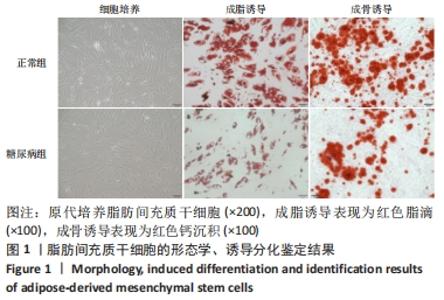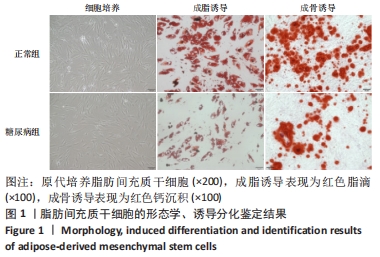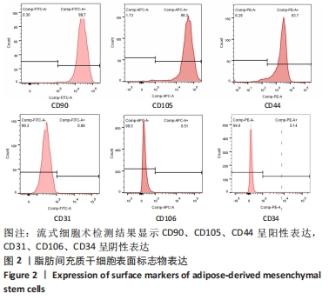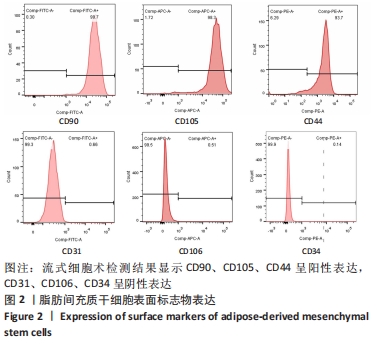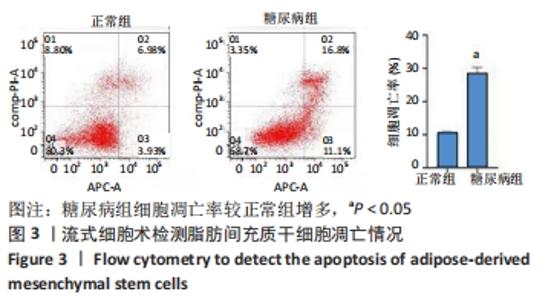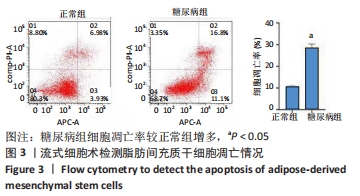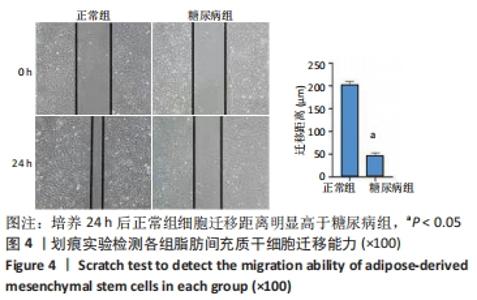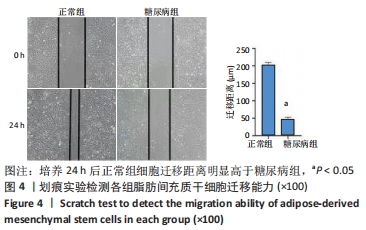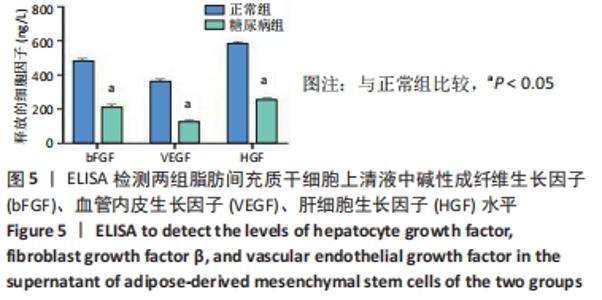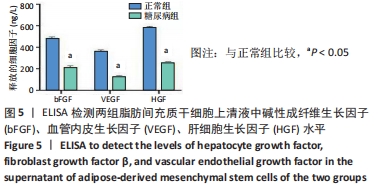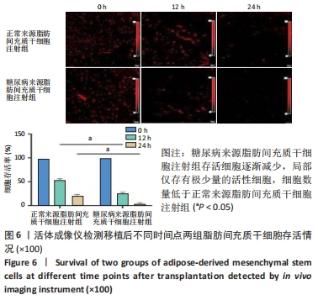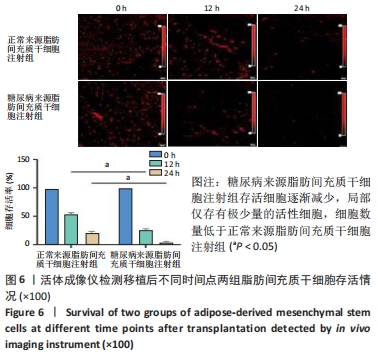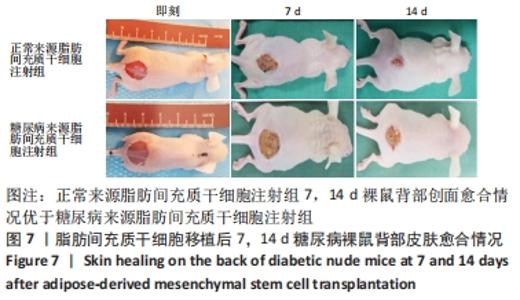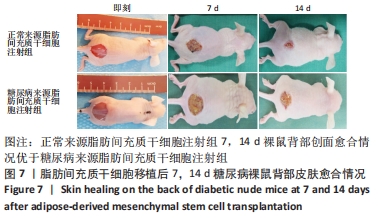[1] AHMED AS, ANTONSEN EL. Immune and vascular dysfunction in diabetic wound healing. J Wound Care. 2016;25(Sup7):S35-S46.
[2] HINTZE G. Diabetes complications. Dtsch Med Wochenschr. 2020;145(22):1585.
[3] JIANG Y, HUANG S, FU X, et al. Epidemiology of chronic cutaneous wounds in China. Wound Repair Regen. 2011;19(2):181-188.
[4] OKONKWO UA, DIPIETRO LA. Diabetes and Wound Angiogenesis. Int J Mol Sci. 2017;18(7):1419.
[5] BREM H, TOMIC-CANIC M. Cellular and molecular basis of wound healing in diabetes. J Clin Invest. 2007;117(5):1219-1222.
[6] ZUK PA, ZHU M, MIZUNO H, et al. Multilineage cells from human adipose tissue: implications for cell-based therapies. Tissue Eng. 2001;7(2):211-228.
[7] ZOGRAFOU A, PAPADOPOULOS O, TSIGRIS C, et al. Autologous transplantation of adipose-derived stem cells enhances skin graft survival and wound healing in diabetic rats. Ann Plast Surg. 2013;71(2):225-232.
[8] YU S, CHENG Y, ZHANG L, et al. Treatment with adipose tissue-derived mesenchymal stem cells exerts anti-diabetic effects, improves long-term complications, and attenuates inflammation in type 2 diabetic rats. Stem Cell Res Ther. 2019;10(1):333-342.
[9] BUCHADE S, DESAI S, BHONDE R, et al. Stem Cells: A Golden Therapy for Diabetic Wounds. Curr Diabetes Rev. 2021;17(2):156-160.
[10] GORECKA J, GAO X, FEREYDOONI A, et al. Induced pluripotent stem cell-derived smooth muscle cells increase angiogenesis and accelerate diabetic wound healing. Regen Med. 2020;15(2):1277-1293.
[11] SUN TJ, TAO R, HAN YQ, et al. Therapeutic potential of umbilical cord mesenchymal stem cells with Wnt/β-catenin signaling pathway pre-activated for the treatment of diabetic wounds. Eur Rev Med Pharmacol Sci. 2014;18(17):2460-2464.
[12] VEMURI MC, CHASE LG, RAO MS. Mesenchymal stem cell assays and applications. Methods Mol Biol. 2011;698:3-8.
[13] LI Y, WANG L, ZHANG M, et al. Advanced glycation end products inhibit the osteogenic differentiation potential of adipose-derived stem cells by modulating Wnt/β-catenin signalling pathway via DNA methylation. Cell Prolif. 2020;53(6): e12834.
[14] YIN Y, CHEN F, LI J, et al. AURKA Enhances Autophagy of Adipose Derived Stem Cells to Promote Diabetic Wound Repair via Targeting FOXO3a. J Invest Dermatol. 2020;140(8):1639-1649.e4.
[15] STAFEEV I, PODKUYCHENKO N, MICHURINA S, et al. Low proliferative potential of adipose-derived stromal cells associates with hypertrophy and inflammation in subcutaneous and omental adipose tissue of patients with type 2 diabetes mellitus. J Diabetes Complications. 2019;33(2):148-159.
[16] TRINH NT, YAMASHITA T, OHNEDA K, et al. Increased Expression of EGR-1 in Diabetic Human Adipose Tissue-Derived Mesenchymal Stem Cells Reduces Their Wound Healing Capacity. Stem Cells Dev. 2016;25(10):760-773.
[17] 董叫云,弓家弘,嵇晓芸,等.异体糖尿病大鼠来源脂肪干细胞移植治疗糖尿病大鼠创面的初步评价及其机制探讨[J].中华烧伤杂志,2019,35(9):645-654.
[18] SUN S, WANG C, RAN X. Research progress on role of microRNA in healing of diabetic wound. Zhongguo Xiu Fu Chong Jian Wai Ke Za Zhi. 2014;28(11):1431-1434.
[19] AN Y, LIN S, TAN X, et al. Exosomes from adipose‐derived stem cells and application to skin wound healing. Cell Proliferation. 2021;54(3):303-308.
[20] MOHANTY C, PRADHAN J. A human epidermal growth factor-curcumin bandage bioconjugate loaded with mesenchymal stem cell for in vivo diabetic wound healing. Mater Sci Eng C Mater Biol Appl. 2020;111:110751.
[21] BAI Q, HAN K, DONG K, et al. Potential Applications of Nanomaterials and Technology for Diabetic Wound Healing. Int J Nanomedicine. 2020;15:9717-9743.
[22] AKINGBOYE AA, GIDDINS S, GAMSTON P, et al. Application of autologous derived-platelet rich plasma gel in the treatment of chronic wound ulcer: diabetic foot ulcer. J Extra Corpor Technol. 2010;42(1):20-29.
[23] WU YY, JIAO YP, XIAO LL, et al. Experimental Study on Effects of Adipose-Derived Stem Cell-Seeded Silk Fibroin Chitosan Film on Wound Healing of a Diabetic Rat Model. Ann Plast Surg. 2018;80(5):572-580.
[24] YAO YZ, DENG CL, WANG B. Advances in the research of influence of diabetes in biological function of adipose-derived stem cells. Zhonghua Shao Shang Za Zhi. 2018;34(9):653-656.
[25] 王哲,张殿宝,刘晓玉,等.正常与糖尿病小鼠脂肪间充质干细胞移植促进皮肤创伤愈合的比较[J].解剖科学进展,2014,20(5):420-424.
[26] CHO H, BLATCHLEY MR, DUH EJ, et al. Acellular and cellular approaches to improve diabetic wound healing. Adv Drug Deliv Rev. 2019;146:267-288.
[27] LAMERS ML, ALMEIDA ME, VICENTE-MANZANARES M, et al. High glucose-mediated oxidative stress impairs cell migration. PLoS One. 2011;6(8):e22865.
[28] GADELKARIM M, ABUSHOUK AI, GHANEM E, et al. Adipose-derived stem cells: Effectiveness and advances in delivery in diabetic wound healing. Biomed Pharmacother. 2018;107:625-633.
[29] CAO Y, GANG X, SUN C, et al. Mesenchymal Stem Cells Improve Healing of Diabetic Foot Ulcer. J Diabetes Res. 2017; 17(9):328-347.
[30] JIN J, SHI Y, GONG J, et al. Exosome secreted from adipose-derived stem cells attenuates diabetic nephropathy by promoting autophagy flux and inhibiting apoptosis in podocyte. Stem Cell Res Ther. 2019;10(1):95-101.
|
